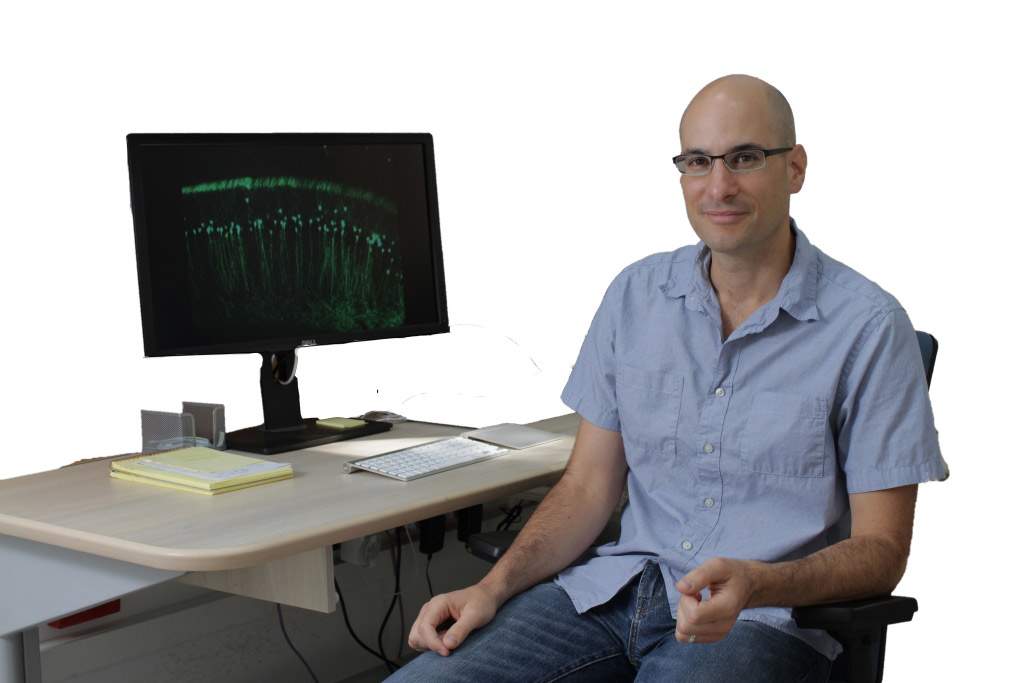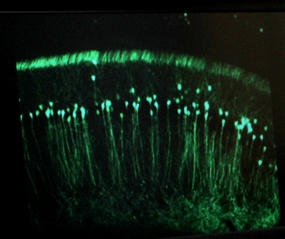Are you a journalist? Please sign up here for our press releases
Subscribe to our monthly newsletter:

If you try to recall the details of yesterday’s dinner, they are probably still vivid in your mind. But recalling the dinner you had a few days ago takes much more effort, even if you’d been dining in the same place and in the same company. What neural mechanisms make the newer memory clearer and the older ones vague and harder to retrieve? In more general terms, what happens to memories stored in the brain over time, sometimes over a lifetime? How are they affected by the passage of time, new experiences or disease?
These are the kinds of questions investigated by Dr. Yaniv Ziv, who recently joined the Weizmann Institute’s Neurobiology Department as a senior scientist. Ziv is focusing on the hippocampus, the brain structure that forms and stores the memories of events – episodic memory – as well as playing a central role in spatial orientation. This structure, located deep inside the brain under the cortex, has recently been the site of one of the most fascinating discoveries in modern neuroscience: Contrary to accepted dogma, new neurons are born in the adult human brain all the time. In fact, new neurons are estimated to be generated in the human hippocampus at the rate of about 700 a day. One of Ziv’s research goals is to clarify the role that these neurons play in the processing of memory.
To investigate memory over the long term, Ziv is taking advantage of optical imaging, an advanced technique that involves recording brain activity on video via a microscope. During his postdoctoral research at Stanford University, he developed an optical imaging approach that has for the first time made it possible to accomplish a challenging task: monitoring the activity of large numbers of neurons deep within a living brain over a long period of time. The approach combines three novel technologies: a miniaturized fluorescence microscope that can be mounted like a helmet on the head of a freely-moving mouse; ultra-thin, rod-shaped implantable lenses that serve as micro-endoscopes for imaging deep-brain structures; and genetically engineered neurons that emit fluorescent light, whose varying intensity serves as an indicator of neuronal activity.

While at Stanford, Ziv used the system to perform a study in which he tracked the activity of thousands of so-called “place cells” in the hippocampus of mice over the course of several weeks as they explored a maze. As reported in Nature Neuroscience, the study produced a surprising finding: Even as the mice covered the same route in the maze day after day, the route was represented each time in their brain by a different subset of neurons – there was only about a 20 percent overlap among the subsets. This finding is consistent with the idea that events occurring in the same place at different times could be encoded differently in the memory. It would explain why we are able to distinguish between memories – for example, between the memory of the walk in the park we took yesterday from that of the same walk a day earlier.
In his new lab at Weizmann, Ziv applies his experimental system to continue examining long-term memory circuits in the hippocampus and study how these circuits are altered by experience and time. In one study, he is exploring how memories are clustered in time, which enables us, for example, to recall all of yesterday’s events as taking place during the same day. He also intends to look into the decline of memory that occurs in neurodegenerative diseases, particularly Alzheimer’s. A great deal has been learned in the past few decades about the genetic mutations and abnormal proteins involved in Alzheimer’s, but it is unknown how these defects affect the storage of information and memory by the brain. Ziv will address the connection between the molecular basis of neural degeneration and alterations in memory processing.
Dr. Yaniv Ziv and his wife Michal share a fascination with the brain: Yaniv seeks to decipher the neural code, Michal is a clinical psychologist. They met while conducting undergraduate studies in biology at the Hebrew University of Jerusalem. Yaniv, who earned his Ph.D. from the Weizmann Institute in 2007, under the guidance of Prof. Michal Schwartz, has joined the Weizmann faculty after conducting postdoctoral research at Stanford University for six years. He and his wife live on the Weizmann campus with their two daughters, aged seven and three.
Dr. Yaniv Ziv’s research is supported by the Irving I Moskowitz Foundation.